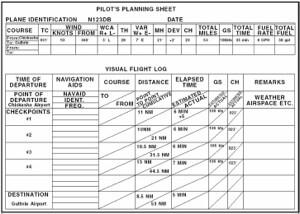
From free-online-private-pilot-ground-school.com
In the past few weeks, I’ve used the phrase “A plan to deviate from” in a couple of my tweets. For example, when @FAASafetyBrief asked, “Single Pilot Resource Management (SRM): Do you have any tips for when flying alone in your airplane?” My response was, “When flying alone 1) Have a plan to deviate from with backups 2) Use flight following 3) Don’t be afraid to ask for help.” Perhaps I should explain what I mean by it.
One form is shown in Thunderstorms and False Dilemmas, where Robert Goyer of @FlyingMagazine tells of his return flight from Sun ‘n Fun this year. He explains his decision to launch for home despite the line of thunderstorms in his path. This was not reckless because he had a plan to get home in the shortest possible time with options to divert if the basic plan was foiled.
When I use the phrase, I’m usually referring to a less complex, but dynamic, situation. Something like planning to train one place, but being prepared to change on the way or changing the order of stops in an outing for the day. If I don’t at least plan for a minimum amount of fuel needed for the time I expect to be out, I’m highly likely to get myself into trouble. Weather, as Mr. Goyer describes, adds another layer of complexity. More people adds another layer.
Particularly when one you are around military folks, you are likely to hear, “No plan survives first contact with the enemy.” Be prepared for “first contact” before you walk onto the ramp.
What do you do to ensure your plan survives?
